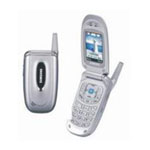Samsung Electronics, the world’s third largest cell phone producer, finally gives in to the global business trend of cranking out mobile handsets at dirty-cheap prices.
A Samsung executive yesterday said the Seoul-based company had decided to enter such low-end markets as India and Southeast Asian countries with handsets priced at between $50 and $100. This is a major strategic revamp for Samsung, which has focused solely on the premium markets with pricey, feature-rich models. "Let me say this first: we have no plan at all to introduce phones cheaper than $50. But we seek to attack the $50-$100 markets in some developing nations," said the executive, who declined to be named. "This does not mean we will scrap our unique strategy of selling premium phones. We plan to ship the low-priced models to just a handful of potential-laden destinations to preempt the markets," he said. As possible destinations of the inexpensive models, the anonymous executive picked India and countries in Southeast Asia and South America. "Our top priority is to make folks in the entry markets get familiar with the user interfaces and brand of made-by-Samsung handsets," the executive said. "Then, they will buy more expensive Samsung phones later when they switch their handsets after the income level goes up there," he said. Experts point out the global competition to increase sales with low-priced handsets prompts Samsung to flirt with the low-tier wireless markets. "As Nokia and Motorola continue to roll out cheap handsets in the developing countries, Samsung seems to have no choice but to jump onto the bandwagon to keep its market share," Mirae Asset analyst Kim Kyung-mo said. "The tactical change is a two-edged sword: it may help Samsung to add market share or it may end up blowing out the hard-earned premium image of the firm," Kim said. Nokia currently accounts for about one-third of the international demands for cell phones, followed by Motorola, which boasts of a 20 percent-plus market share. Samsung came in at third with about 12 percent share.
|





